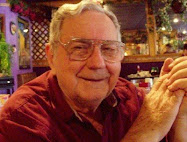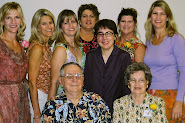 Recently while shopping for groceries I noticed that I had written margarine on the list. In the refrigerator case were many choices, but rarely the word "margarine." The brand I chose had in very small letters, "1/3 less fat than margarine." This made me wonder what we were actually eating.
Recently while shopping for groceries I noticed that I had written margarine on the list. In the refrigerator case were many choices, but rarely the word "margarine." The brand I chose had in very small letters, "1/3 less fat than margarine." This made me wonder what we were actually eating.Growing up on the farm we always had butter. Each year in spring there was a two or three week period when a weed we called bitterweed bloomed. The cows craved its flowers but they made the milk so bitter we could only drink it if we added lots of cocoa. The cream was so bitter we could not eat it or sell the butter made from it. When Mother added cream to the dogs' food, they turned up their noses and walked away. Only the hogs seemed not to mind. During bitterweed season, Mother would buy margarine. It came in 1 pound blocks and the package included a small tablet for coloring. Mixing in the color was a lot of work and we usually did not bother. The dairy industry got Congress to pass a bill requiring all margarine to be sold without yellow coloring, which is why the yellow came separately. I don't know when the law was repealed but I think it was during WW II.
During the Depression we usually had butter on our homemade bread. A lot of the kids had in their school lunches homemade bread smeared with lard and sprinkled with sugar or leftover breakfast biscuits with bacon drippings on one side and syrup on the other (actually not bad).
My daughter said that Google had a lot to say about both butter and margarine. I checked--it did.
Margarine was developed by Hippolyte Mege-Mouries in 1869 at the request of Napoleon II, who wanted a butter substitute for his soldiers. In 1871 he sold the "knowhow" to the Dutch firm Jurgens, now part of Unilever. In the beginning margarine was largely animal fat. Now it is largely vegetable oil.
"Butter," the Greek word for cow cheese, has been available since nomads started milking camels and water buffalo--cows came much later. A goat was carefully skinned, the openings except for the left foreleg sewn shut, and milk placed in this skin container. The motion of the camel walking churned the milk, making the first butter. It is still made this way in some areas.
As cows were developed in northern Europe, butter and cheese production developed along with them. It later came to the U.S.
In the ancient peat bogs of northern Europe and England, containers of butter have been found (as well as human remains). The peat bogs provided an antiseptic, acidic environment that preserved the butter.
It takes 25 pounds of milk to make a pound of butter, depending on the butterfat of the milk. In Philadelphia markets butter was first sold by the pound.
(I had planned to add more, but I think this story is long enough.)









No comments:
Post a Comment